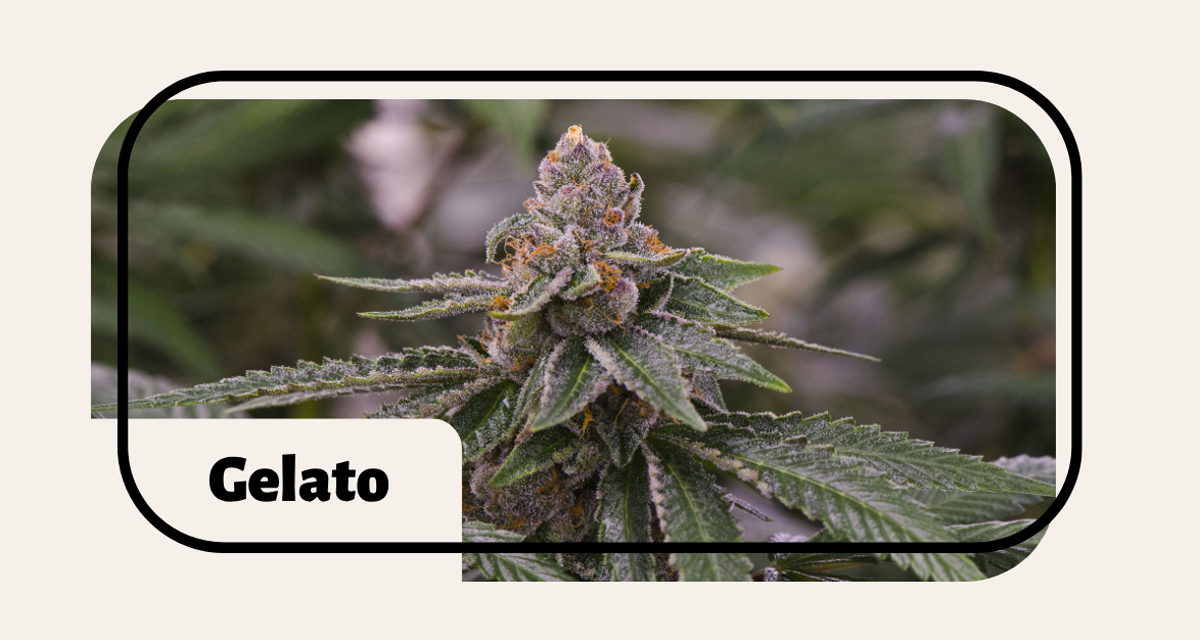
Cannabinoid 101
Cannabinoid molecules themselves are incredibly diverse. While they are primarily produced in cannabis plants, they can be found in lesser amounts in other plants and are even produced naturally in many mammals, including humans. Not only are cannabinoids structurally distinct from other cannabis molecules, but they are also known to have a wide range of biological effects and even interact with their very own set of receptors in humans—the endocannabinoid system.
Learn more about cannabinoids and why they are so critical to how cannabis affects the brain and body.
What Are Cannabinoids?
Though we typically associate cannabinoids with the feelings experienced after consuming cannabis, the true definition of cannabinoids is much broader than “cannabis molecule.” Cannabinoids are classified as a group of compounds that can influence the body’s endocannabinoid system.
As a result, there are three distinct categories of cannabinoids:
Phytocannabinoids
This class of cannabinoids is found within plant varieties, including the Cannabis Sativa L. plant we are so familiar with. In fact, cannabis is the most diverse and abundant source of phytocannabinoids on the planet, with over 150 unique cannabinoids identified thus far. While it was previously believed that cannabinoids were found only in the cannabis plant—hence their name—new research has found cannabinoids in plants like cacao, echinacea, black pepper, rhododendron, and black truffle.
Ecologically speaking, cannabinoid compounds appear to protect the plant from harmful UV rays and may help deter insects or animals that are looking to eat the plant. It is noteworthy that plants do not directly create cannabinoid compounds. Instead, they produce cannabinoid acids that must be activated with heat or desiccation (drying out) to become the active cannabinoids we know and love. It is then that they can interact with the body’s endocannabinoid system.

Endocannabinoids
Also known as endogenous cannabinoids, this group of cannabinoids is naturally produced in the bodies of mammals, including humans. There are two main endocannabinoids in the body: anandamide and 2-arachidonoylglycerol. They are produced by many different body tissues and are structurally designed to interact with the body’s endocannabinoid system.
This signaling system is composed of endocannabinoids, cannabinoid receptors, and enzymes. It is responsible for many different activities that help keep the body balanced or in homeostasis. Endocannabinoids and phytocannabinoids alike bind with cannabinoid receptors to modulate critical bodily functions like immunity, sleep, memory, and responses to stress.
Synthetic Cannabinoids
What Are the Types of Cannabinoids in Cannabis?
As previously mentioned, there are over 150 known phytocannabinoids in cannabis. These can be classified as either major or minor, depending on the amount present within the average cannabis plant. Major cannabinoids are frequently present in large concentrations, while minor cannabinoids are typically only present in trace concentrations.
Major Cannabinoids

Delta-9-Tetrahydrocannabinol (THC)
This cannabinoid is the primary chemical that causes the psychoactive effects you experience when you consume cannabis products. Depending on the method of delivery, THCa, the natural precursor to THC, is activated by heat before adding to edibles, while dabbing, or during the combustion of dried flower to create THC itself. The THC is then either inhaled, digested, or absorbed under the tongue to enter the bloodstream. From there, it binds to the various cannabinoid receptors in the brain and body and activates the endocannabinoid system (ECS) via both CB1 and CB2 receptors. In this way, THC can interact with parts of the brain responsible for memory, thinking, pleasure, movement, and coordination and causes pleasant psychoactive effects.

Cannabidiol (CBD)
CBD was the first cannabinoid discovered and accounts for up to 40% of the cannabinoids in a cannabis extract. However, it is important to note that CBD does not interact with the ECS in the same way as THC and therefore does not cause psychoactive effects. CBD has a low affinity for ECS receptors, but it can modulate the way THC binds to these receptors, creating non-intoxicating and therapeutic effects. CBD can also interact with other receptors and appears to have pain-relieving, anti-inflammatory, stress-relieving, and potentially even immune-boosting effects.
Minor Cannabinoids
Cannabigerol (CBG)
Cannabinol (CBN)
Cannabichromene (CBC)
Delta-8-Tetrahydrocannabinol (Δ8-THC)
Cannabicylol (CBL)
CBL is formed when CBC is oxidized or exposed to UV light and acidic conditions, causing it to degrade. Therefore, it is much more prevalent in older post-harvest flower. Because it is a degenerative cannabinoid, smoking or vaping hemp or cannabis will also result in the presence of CBL in the bloodstream. While CBL does not cause a euphoric effect, it influences behavior, mood, and the perception of surroundings, especially in tandem with THC.
Cannabielsoin (CBE)
Cannabitriol (CBT)

How Do Cannabinoids Affect You?
As mentioned, endocannabinoids interact with the endocannabinoid system to create a variety of responses within the brain and body. Endocannabinoids, the cannabinoids created within the human body, attach to cannabinoid receptors to affect systemic processes in the body that result in homeostasis. Some of the processes controlled by the ECS include appetite, memory, mood, pain, and sleep.
Because phytocannabinoids are structurally similar to endocannabinoids, they can bind with the body’s cannabinoid receptors or influence the way other cannabinoids and endocannabinoids are able to bind. This, in turn, has effects on the ECS. Potential effects of cannabinoids include euphoria, creativity, increased appetite, inflammation reduction, pain relief, immune response, and seizure suppression.
The effects that cannabinoids in cannabis will have on the body depend on three primary factors: the individual in question, other compounds present in the cannabis strain, and the method of consumption.
The Individual
Two different people can experience varying effects after using the same type of cannabis. Exactly how cannabinoids will affect an individual depends heavily on their endocannabinoid system, which is influenced by genetics. A person with a functional ECS or a genetically high concentration of natural endocannabinoids will likely experience moderate psychoactive effects, while those with lower endocannabinoid levels will likely experience a more intense high.
It has also been suggested that cannabinoids can interact with other receptors in the body —the potential effects of cannabinoids are determined by how well they can bind with these receptors. Finally, unique aspects of an individual’s internal hormone levels and cannabinoid tolerance can affect the way they experience cannabis.
Cannabinoid and Terpene Profiles
The precise chemical composition of the strain used will also affect the experience of the user. Different strains will have different concentrations of the over 100 potential cannabinoids, altering the psychoactive and therapeutic experience. Further, ECS receptors are also influenced by the other compounds present in the cannabis plant, including terpenes and flavonoids. These compounds may enhance, diminish, or modulate the effects of the cannabinoids in the strain, and all work in synergy to create the overall experience. This phenomenon is called the entourage effect.
Intake Method
The effects of the various cannabinoids in a strain of cannabis are also influenced by how they are taken into the body. For example, taking activated cannabinoids into the lungs via smoking or vaping allows the user to begin experiencing the effects quickly because the cannabinoids move directly from the lungs to the bloodstream, then to the brain. Alternatively, edible forms of cannabis must travel through the gastrointestinal tract and be metabolized before the effects are experienced.
Additionally, the psychoactive effects experienced after consuming an edible may be more intense and longer lasting than those experienced via inhalation. This is because as THC is metabolized, enzymes degrade it into 11-OH-THC, another psychoactive compound. The presence of both THC and 11-OH-THC can mean a longer-lasting, stronger high.

Explore
Continue Your Cannabis Learning with Dank Budz
Cannabinoids are an essential component of the therapeutic and psychoactive effects most people seek when they consume cannabis. However, they are far from the only important compounds found within our favorite plant. Keep reading to learn more about cannabis science.







